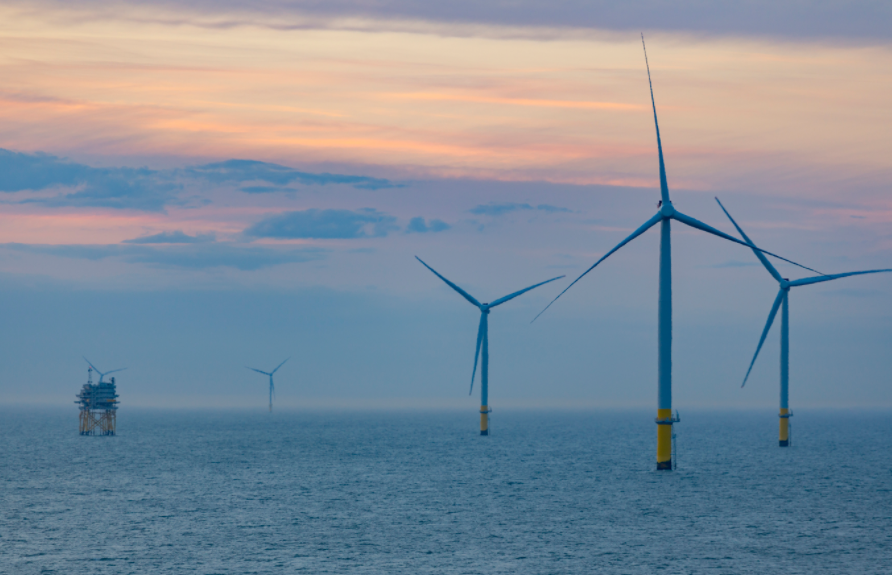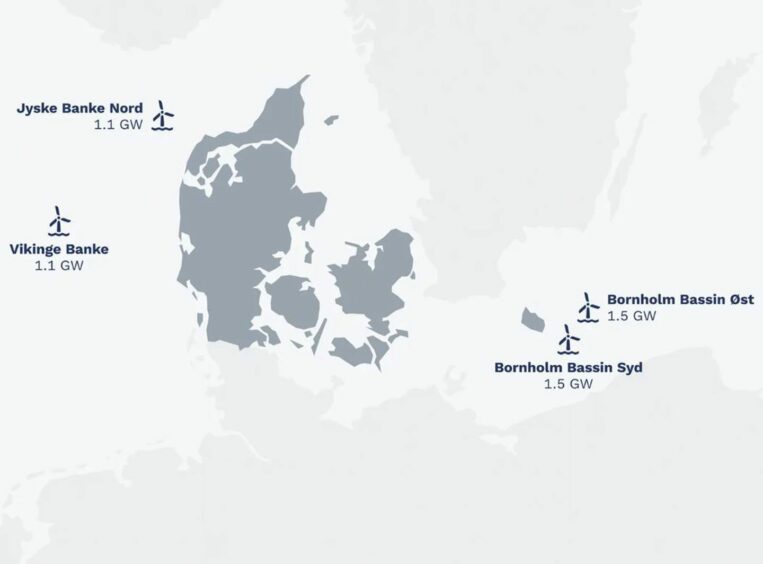
Developer Ørsted (ORSTED:CPH) and investor Copenhagen Infrastructure Partners (CIP) have joined forces to develop gigawatts of new offshore wind projects in Danish waters.
Announced Tuesday, the two said the schemes would be built as part of a new 50/50 partnership under Denmark’s so-called ‘open-door’ policy for offshore wind development.
Both organisations are already involved in some of the largest offshore wind developments to date, spanning both fixed and floating projects.
Projects proposed under the new partnership include the ‘Vikinge Banke’ (1.1 GW) and ‘Jyske Banke Nord’ (1.1 GW) in the North Sea, as well ‘Bornholm Bassin Syd’ (1.5 GW) and ‘Bornholm Basin Øst’ (1.5 GW) in the Baltic Sea.
Together they equate to more than double the Nordic nation’s current installed offshore capacity, and will be built without taxpayer support.
Working together the two will oversee development, construction, and operation of the sites, as well as related transmission infrastructure.
They said their hope is to create “a Danish Power-to-X stronghold” by delivering large-scale renewable electricity as soon as possible, with a target of 2027/2028 – if found to be feasible.
Ørsted head of region for continental Europe, Rasmus Errboe, said: “Denmark has been a pioneer in offshore wind and is a front-runner in the green transformation. The four major open-door projects can help consolidate Denmark’s continued leadership position and create the foundation to kick-start the next phase of a Danish business adventure around the production of renewable hydrogen and green fuels.
“I’m very excited about the partnership with CIP where we combine our unique skills and knowledge to develop a substantial part of Denmark’s offshore wind resources.”
CIP senior partner Torsten Lodberg Smed added: “It’s an obvious and good idea for the most experienced Danish offshore wind developers to join forces to ensure that Denmark’s largest build-out of offshore wind takes place as efficiently as possible and with due respect for the environment and biodiversity in Danish waters.
“If we succeed in completing the projects, we’ll also ensure the renewable electricity needed to give the Danish Power-to-X industry a much-needed boost, and we’re pleased with the support from the Danish pension funds and their members, who prioritise and invest in the green transition.”
They also note that each of the projects is approximately twice the size of Denmark’s largest operating offshore wind farm to date.
The intention is for projects to be built prior to and in parallel with those procured through government tenders, “so that the offshore wind industry can have visibility over new projects and a stable pipeline,” which they said will enable sustainable growth in the supply chain.
Under Denmark’s open door policy developers can the initiative to build an offshore wind project by submitting an unsolicited application for a license to carry out preliminary investigations in the given area.
The application must as a minimum include a description of the project, the anticipated scope of the preliminary investigations, the size and number of turbines, and the limits of the project’s geographical siting.
In an open-door project, developers also pay for the grid connection to land.
The Danish Energy Agency initiates a hearing with other government bodies to clarify whether there are other major public interests that could block the project it then decides on an approval for preliminary investigations.
Recommended for you

 © Supplied by Orsted
© Supplied by Orsted